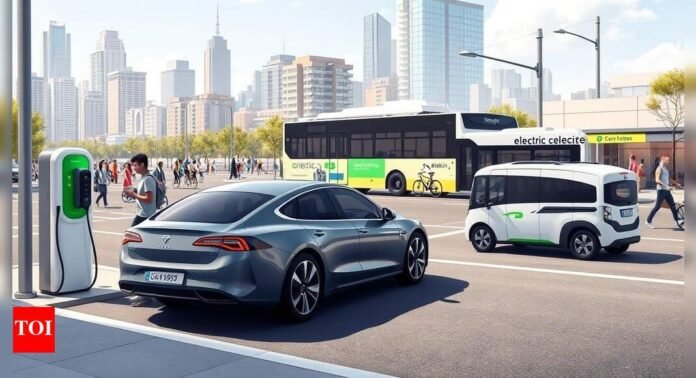India’s EV Growth at Risk: China’s Rare Earth Export Limits
Delays in rare earth magnet shipments from China could slow down India’s electric vehicle growth

India’s electric vehicle (EV) industry faces potential setbacks. China’s stricter control over rare earth magnet exports causes delays. This could slow down EV production in India.
How Rare Earth Magnet Delays Affect India
Crisil Ratings warns that even a month-long disruption can affect EV launches and production. This could push back the sector’s growth trajectory.
Why Rare Earth Magnets Matter
- They are crucial for permanent magnet synchronous motors (PMSMs) used in EVs and hybrids.
- They provide high torque and energy efficiency.
- Traditional vehicles use these magnets in electric power steering systems and other motorized components.
China’s New Export Rules
China imposed export restrictions in April 2025 on seven rare earth elements and finished magnets. This move requires detailed end-use declarations and bans defense-linked or US-bound re-exports.
The new rules have caused delayed clearances and growing shipment backlogs. The clearance process now takes at least 45 days, tightening global supply chains.
India relies on China for over 80% of its magnet imports. By the end of May, around 30 import requests from Indian companies were pending approval from Chinese authorities.
Impact on India’s Auto Sector
Anuj Sethi, Senior Director at Crisil Ratings, highlights the timing of the supply squeeze. The auto sector is preparing for aggressive EV rollouts. Over a dozen new electric models are planned for launch, most built on PMSM platforms.
Most automakers have 4-6 weeks of inventory. Prolonged delays could start affecting vehicle production. EV models may face deferrals or rescheduling from July 2025. If supply bottlenecks persist, two-wheelers (2W) and internal combustion engine (ICE) passenger vehicles could also be affected.
Growth Projections for India’s Auto Sector
Passenger vehicle volumes are forecast to grow 2–4% in FY26. EVs, starting from a lower base, are expected to rise 35–40%. Electric two-wheelers could expand 27%, outpacing the wider two-wheeler segment’s 8–10% growth. However, these projections could soften if supply constraints worsen.
India’s Plan to Tackle the Challenge
The Indian government and automakers are working on a two-part strategy:
- Short-term: Building strategic inventories, finding alternative suppliers, and stepping up domestic assembly under the Production Linked Incentive (PLI) scheme.
- Long-term: Reducing import dependency by accelerating rare earth exploration, creating local processing capabilities, and investing in recycling.
India has opened direct lines of communication with Beijing to stabilize supply flows. Ministry of External Affairs spokesperson Randhir Jaiswal stated, “We are in touch with the Chinese side to bring predictability to the supply chain for trade, consistent with international practices.”
Commerce and Industry Minister Piyush Goyal described China’s export restrictions as a “wake-up call” for the world. He emphasized that India is actively working to develop alternate supply chains and position itself as a credible partner for global businesses looking to reduce dependence on China.
Global Vulnerability and the Need for Diversification
China’s dominance in rare earth processing, controlling over 90% of global magnet output, has left industries worldwide vulnerable. These magnets are vital for EVs and used across sectors such as home appliances and renewable energy.
Efforts are being made to diversify sources. At the recent India-Central Asia Dialogue in New Delhi, India and five Central Asian nations expressed interest in jointly exploring rare earths and critical minerals. This could offer a longer-term buffer against global supply shocks.



